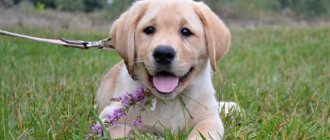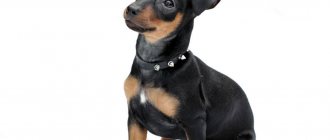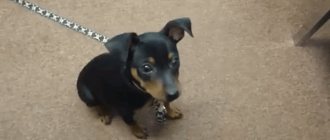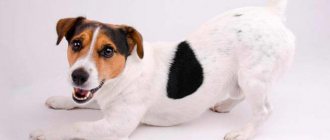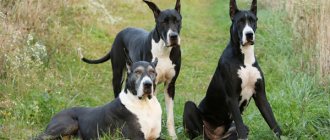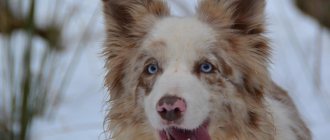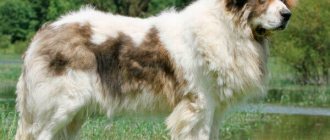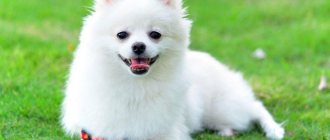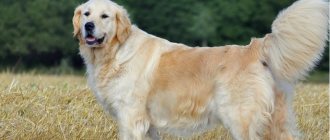So, miniature pinscher. When middle-aged and older people see this breed, the immortal line from the poem “Woe from Wit” by A.S. comes to mind. Griboedova, “Your Spitz is a lovely Spitz, no bigger than a thimble...”; those who are not very knowledgeable about dog breeds, the “cunning types of civilian appearance”, in most cases generally confuse them (sometimes Italian greyhounds are also mistaken for miniature pinschers and vice versa) - all three are miniature, both for them and for the miniature pinscher (the spelling “miniature pinscher” is also allowed), Both the Spitz (also called the Pomeranian) and the Greyhound Italian Greyhound are equally suitable for the definition of “indoor”. Especially if in the second case we are talking specifically about miniature Spitz (miniature Spitz).
All three breeds are ancient, sophisticated and certainly aristocratic - and therefore both of them, and the third, can very often be found today, well, let’s say, in the hands of domestic lorettes of the “category 20+”.
Description of the Miniature Pinscher breed
Popularity 89th place among 263 dog breeds
Lifespan:
13-15 years old
Height:
25-30 cm
Country of origin:
Germany
Average price:
15-25 thousand rubles
Weight:
4-6 kg
Latest articles Cat health
Rabies vaccination for cats: choice of vaccine, necessity, schedule 01/22/2022 4 0 0
Selection and adaptation
TOP 20 best cat breeds for families with children 01/22/2022 25 0 0
Simple conclusions for the owner
To raise a well-mannered and obedient puppy, you need:
- Engage with him in studying and executing commands.
- Set clear and understandable rules.
- Solve problems that arise during the education process.
- Insist on.
- Don't be afraid to use physical punishment.
- Remember that you can never have too many positive emotions and games.
- Show your dog confidence in his abilities.
- Believe that if you work and put in a lot of effort, success will come.
And the most important thing to always remember is not to worry about small failures or difficulties. After just a short period of time, you will be surprised by the positive changes in the character of your pupil. You just need to work while maintaining optimism and a good mood.
Advantages and disadvantages
- Pros:
- hardy and unpretentious in nutrition;
- high protective instinct;
- suitable for keeping in small apartments;
- weak shedding;
- loves children;
- developed intelligence and high learning ability.
- Minuses:
- jealous character that makes it difficult to get along with other pets;
- the need for daily physical activity;
- tendency to damage furniture and shoes;
- does not tolerate frost well;
- Difficulty in training due to dominant nature.
The basis of the educational process
How correctly the puppy will be raised depends on the owner’s persistence, the amount of time spent and love for the pupil. There must also be strict control. Just because you love your pet does not mean that he cannot be punished for pampering or trying to eat something harmful from the floor or the ground. The best owner for any dog is a strong, demanding, but kind dad.
There are several important and effective secrets of proper upbringing:
- If the puppy deserves physical punishment, there is no need to make concessions. The type of punishment will have to be applied at the beginning of education. In the future, the dog will wean itself from doing bad things and will know that at the first request it needs to execute the “fu” command. You should not lose sight of the fact that until the age of 3 months, a pet cannot be raised using physical punishment. At a tender age, parenting methods should be extremely careful.
- The baby should receive as many positive emotions as possible from the owner. The pet takes negative emotions and punishment for granted if they are appropriate, and the owner does not forget to praise his pupil. It is worth encouraging the puppy, for example, when he correctly followed the command, went to the toilet in a special place. Many owners pet their dogs even without achievements. If you use this gesture of attention more often, the contact between the owner and the puppy becomes closer.
- If you took a puppy to become a friend, a protector, then you need to take into account that loyalty is the quality of those dogs that consider their owner a member of their pack. Then the dog is really ready to give his life so that you can be saved.
Overly cruel and demanding owners will not be able to raise a reliable protector. This does not mean that you can allow people to sit on your neck. The principle of the golden mean is to initially praise the kids as often as possible, and over time, praise and encouragement with treats for following commands will be needed much less often.
Key facts
The description of the miniature pinscher breed says that the shortened name came from Germany, which is considered the country of origin of the miniature pinscher. The word "zverg" is often found in the original fairy tales of the Brothers Grimm. For example, the famous Rumplestiltskin is the same “miniscent”, that is, a dwarf. In this regard, other names for the breed include dwarf or miniature pinscher.
The dimensions of the miniature pinscher are 4-6 kg in weight and 25-30 cm in height. Females should be smaller than males. The lifespan of a miniature pinscher is at least 13 years. If the basic rules of care are followed and there are no congenital diseases, pets live for about 15 years.
The characteristics of the miniature pinscher breed include not only a description of external data, but also character traits. You also need to get to know them before getting a dog.
Life with a playful and life-loving miniature is full of adventures. An endless charge of energy always flows over the edge, so the dog gets along well with children and teenagers. She is ready to support any crazy ideas of her owners or encourage them to take an adventure. The mini pinscher is not at all embarrassed by his size, so he is not averse to competing with a larger opponent or trying to seize power in your home. Timely education will help to cope with dominant behavior, strengthening the authority of the owner in the dog’s head.
Flaws
This breed is quite jealous and domineering, so the dog will rarely tolerate competition with other pets. But if she manages to take the lead and concentrate the bulk of the owner’s attention on herself, there will be no problems. On the other hand, these dogs tend to live in herds, and if you suddenly keep several representatives of this breed, they will develop their own hierarchy and team spirit. If you have your own plot or garden, be prepared for the fact that several holes or holes may appear in your favorite flower beds. Some miniature pinschers still have a very strong hunting instinct, and they are constantly looking for the shelter of mice or moles. Don't look at the dog's small stature; in the house he can easily jump onto a table or even a windowsill. Therefore, on days when you are away from home, try to limit your dog from visiting the kitchen, where he can harm himself or damage household appliances and dishes.
Like any breed, miniature pinschers love to chew on everything. So, to avoid conflicts with your pet, put shoes, valuables and wires away. But all these difficulties are nothing compared to the charge of positive energy that this dog will give you! Good care, proper training, gradualism and perseverance will help turn even the most inveterate bully into a dog worthy of the proud title of miniature pinscher. A description of the breed will help you choose a good puppy who will become a member of your family in the future. But to avoid problems with the pedigree, it is better to buy a dog in specialized nurseries or from professional breeders.
History of the origin of the miniature pinscher
Short-haired German pinschers, known in European countries back in the Middle Ages, took part in the formation of the breed. The first written mention of a miniature dog dates back to the 15th century, and Germany is recognized as the country of origin of the breed. To obtain more modest dimensions, breeders crossed standard pinschers with Italian greyhounds and dachshunds. As a result of the experiment, it was possible to achieve a decrease in height at the withers by 10 cm, and by the middle of the 20th century - by as much as 20 cm.
The first standard for the new breed was developed in 1880, but it was not until 1955 that the FCI established it internationally. The Miniature Pinscher is the smallest representative of the Pinschers and Schnauzers group.
Varieties
The Miniature Pinscher dog breed itself is not divided into varieties. In fact, she herself is a subspecies in the extensive pinscher family. The closest relatives of miniature pinschers are dogs of the following breeds.
- Doberman. The external double of miniature pinschers, only two to three times taller and much heavier. It is curious that the largest variety in the family was bred later than all others - towards the end of the 19th century. It can be assumed that the famous service qualities of Dobermans are the result of pinscher origin, and were inherited by these giants from their smaller brothers.
- German Pinscher. It became isolated as a breed at the end of the 18th century. A medium-sized type of pinscher that participated in the breed selection of other subtypes.
- Affenpinscher. Also a dwarf subspecies and the only long-haired representative of the family, although it was not bred for beauty, but as a pest fighter. Known since the beginning of the 17th century.
- Austrian Pinscher. A young subspecies, relative to the history of the breed, bred in Austria to protect farms from rodents. Has a long coat and medium size.
Appearance of a miniature pinscher
General impression
The appearance of the miniature must strictly correspond to the description set out in the international standard. Despite this, slight deviations in the appearance and character of dogs are allowed in different countries. Animals from England, the USA and Canada are distinguished by more graceful movements, and the pupils of Israeli nurseries are distinguished by their confident gait and sweeping stride.
Scandinavian miniature pinschers are characterized by a calm and balanced character, and natives from Germany are easy to spot by their stocky and muscular body.
At first glance at the photo of the miniature pinscher, the resemblance to the Doberman is obvious. At the same time, Dobermans have nothing to do with the origin of the miniatures and were bred much later than their little brothers.
Head
Miniature Pinschers are distinguished by their proportional, wedge-shaped head with a distinct stop. The length of the muzzle is slightly shorter than the strong and elongated skull. According to the approved standard, the dog has:
- high-set semi-erect or erect triangular ears;
- brown or black almond-shaped eyes;
- straight bridge of the nose and black lobe with well-developed nostrils;
- dry black lips, tightly fitting to powerful jaws with a scissor bite.
Dogs with cropped ears are only allowed to participate in shows in countries that do not have a law prohibiting cropping. At the same time, docking is not a disadvantage of the breed.
Light eyes, folds on the forehead and low-set ears are unacceptable in the miniature's exterior.
Neck
The head is set on a graceful but strong neck with a noble curve and a smooth transition to the withers. The presence of a suspension is not allowed.
Torso
Purebred dogs have a toned, square-shaped body. The wide, oval-shaped chest protrudes forward expressively, and the sloping back gives compactness to the entire body. Despite possible intrabreed differences, excessive elegance or heaviness are considered a defect.
Forelegs
The forelimbs have a moderately wide set, pronounced angulations, muscular forearms, wrists and pasterns. The elbow joints should not be turned outward or inward.
Hind limbs
The length of the powerful hind limbs exceeds the front ones. The muscles on the wide hips are clearly visible. The paws have a “cat” shape. All fingers are gathered into a ball, and strong claws are painted black.
Tail
The standard allows not only docking of the ears, but also the tail within 1.5-2 cm. The crescent and saber shapes are considered the most advantageous. Animals with such tails receive more points from the judges.
Movement
In the video with miniature pinschers, an energetic and confident gait is clearly visible. The dogs move at a sweeping trot, without slumping their backs.
The prancing step is considered a vice and is not recognized by the FCI, but the English, Canadian and American kennel clubs have a completely opposite opinion on this.
Wool
Miniature Pinschers do not have an undercoat, so the entire body is covered with short and smooth guard hair. Bald patches or curly hairs are unacceptable and are a consequence of crossbreeding with other breeds.
Color
The standard colors of the Miniature Pinscher approved by the FCI include black and tan and fawn. Americans and Canadians have more acceptable options: blue, chocolate and even pinkish-cream with tan, often found in thoroughbred horses.
Marking is acceptable on the chest, lower neck, base of the tail, inner thigh, base of the paws and wrists, and above the eyes.
Size
Gender is easy to identify from a photo. The weight and height of females does not exceed 4 kg and 28 cm. The maximum figures for males can reach up to 5 kg and 30 cm.
The height of the miniature pinscher and the weight of the miniature pinscher allow them to be classified as a small breed, but they are by no means lap dogs. Rather, they can be classified as companions with excellent service qualities.
How to dial and measure height correctly
It is not on a whim that breeders instill certain standard traits into dogs, for which strict parameters are established. The presence of these features helps animals cope with the main tasks of their breeding, i.e. security functions, hunting, decorative.
Accordingly, parameters for measuring standardized indicators and special tools for making measurements have been established. The most accurate measurements are taken with a rigid measuring stick. A less accurate tool, where the error increases, includes a flexible measuring tape.
A book or any flat object is applied to the withers of a dog standing on a flat, level surface, while its head should be raised and its neck straightened. A flat object located at the withers is pressed against the wall at one end and a mark is made at this level (approximately the way we were measured in childhood).
The resulting level is measured with any of the above instruments. The greatest accuracy is obtained by measurements taken three times.
Character of the miniature pinscher
Life on the street is not about the miniature pinscher. This pocket Doberman cannot do without warmth and comfort, so it is recommended to keep it in an apartment or your own home. In winter, you cannot go outside without protective overalls, since the missing undercoat prevents heat retention. The dog is vulnerable not only to low temperatures, but also to drafts, so its place should be in a well-protected place.
The dominant nature of the Miniature Pinscher can be a real problem when walking. If you walk your pet without a leash, he will definitely try to get into trouble. The feeling of fear is unfamiliar to him, so the dog can enter into a fight with a larger opponent. At the same time, you cannot call him reckless. In unequal conditions, the miniature pinscher acts only to protect the owner.
A puppy cannot do without socialization. If a baby grows up surrounded by other animals from childhood, then he is able to make friends even with cats. Under no circumstances is friendship with birds and rodents possible. If kept together with a miniature, they can die from its sharp teeth.
The playful and emotional pet loves to be the center of attention and gets along well with children. You should not leave your dog only with preschool children. If the culture of careful treatment of animals has not yet been instilled, the child may suffer. The Miniature Pinscher will not tolerate unpleasant actions from its small owner.
Miniatures have an innate desire to manipulate. Lack of training in childhood will affect the adult dog, so try to prove that you have the last word in the house.
Pet's communication with the external environment
After the start of regular walks, the puppy’s socialization begins. To practice commands, it is better to choose deserted places where the dog will not be distracted by anything. But it is also necessary to walk with the puppy in crowded places, as well as places where other dogs are walked, so that he gets used to it and is not afraid of the noise of the streets and communication with his relatives.
Keep in mind that the social side of your pet’s life includes your company. The miniature pinscher, especially the small one, does not like loneliness, so gradually accustom him to being at home without his owners. Your first sudden exit from vacation to work may end in your apartment being destroyed by a bored dog.
Miniature pinschers can be trained from four months of age - this is a kind of adolescence, when the puppy develops character and the service qualities inherent in nature. The period is not easy, the dog gains self-confidence and may try to be cunning and manipulate its owner.
At four months of age, miniature pinschers grasp everything new almost on the fly. If you find the right motivation and organize activities in the form of active games, your pet will be more easily disciplined and will learn the necessary skills. It’s better to take a few lessons from a professional dog handler, who will tell you how to communicate more effectively with the animal.
Education and training
When training and raising a miniature pinscher, patience is required. The cunning pet quickly notices the owner’s weaknesses and skillfully plays on them. Don't allow yourself any slack. If there is a ban on sleeping in the master's bed, then it cannot be violated from the very beginning. Otherwise, you will have to frantically figure out how to wean an adult pet from jumping on sofas and beds.
More detailed education begins at 3-4 months. The high intelligence inherent in the breed contributes to the successful performance of exercises even at such a young age. Show authority to gain your dog's respect. More complete information about the nuances of training can be obtained from a dog handler.
The kennel club tells in detail how to raise an obedient pet with a stable psyche. The best reviews are received by joint classes with a pet on an individual basis, where all attention is focused on the formation of an unbreakable bond between man and dog.
Never use force during training. Cruelty to animals undermines trust, fostering cowardice and aggression. Destructive behavior risks taking out anger on other animals, strangers, and even family members.
With little experience with dogs, it is not entirely clear how to train a pet to use a litter box. Owners are not always ready to go outside in winter, so miniature dogs can be taught to go to the toilet at home. Once accustomed to the diaper, place it in the tray, showing the puppy a new place to relieve itself. Wait until your pet starts to worry and put him in the tray. After a successful operation, be sure to praise the puppy and reward him with a treat.
Sometimes several training sessions are required. The main thing here is not to scold your pet when it makes a mistake. Frightened, the puppy will receive a persistent negative reaction and will avoid the tray with all possible forces.
The first walks on the street begin after six months, when the puppy has received all the necessary vaccinations. It is very easy to toilet train outdoors, as the miniature pinscher quickly adopts the habits of other animals.
A trained pet must know the basic commands from the OKD and UGS course. If you want to master more difficult disciplines, but doubt whether it is possible to train a dog in agility, feel free to start your first lessons. In sports disciplines, miniature pinschers demonstrate amazing speed and agility in overcoming the highest objects.
Key points in training
Training for miniature pinschers is very important, as the dogs have a capricious and domineering character and often display aggression towards strangers. There is no need to delay your studies. Well-developed intelligence allows you to start training from an early age.
If the owner misses time or shows the dog his weakness, the dog will quickly take advantage of this and try to become a leader in the relationship with the person.
During the training process, the owner will need a collar and leash, as well as toys and tasty treats. You can start training your puppy at the age of 3 – 4 months . The dog’s psyche at this time is mobile, the animal easily perceives new things.
Before you take your puppy for a walk, you need to introduce him to the collar. It’s enough to dress him up like a pet at home and let him walk around a little. The same applies to leash learning.
Puppies love to chase toys. This hobby can easily be turned into training by training the “fetch” command. For each correctly performed action, the pet should receive a treat. Other commands that a miniature pinscher should know and perform are “near”, “to the leg”, “sit”, “voice”, “lie down”, “front”, “fu”.
Miniature Pinschers are capable of learning more complex commands: “die”, “hold”, “crawl”. Training is a slow process, so it is better to conduct classes in a playful way.
Read about how to properly train a dog in the article: “Training a puppy: effective methods from dog handlers, learning commands at home.”
Miniature Pinscher Health and Diseases
Possible diseases
Some diseases occur most often in miniatures. These include:
- Perthes disease. It appears in puppies at the age of 4-6 months and leads to atrophy of muscle joints and lameness.
- Hypothyroidism. In a sick pet, hormonal metabolism is disrupted, which is fraught with obesity, hair loss, pyoderma and other possible complications.
- Progressive retinal atrophy. This disease causes gradual loss of vision. In the worst case, the animal may go blind.
- Epilepsy. The dog experiences periodic seizures, accompanied by loss of consciousness and uncontrollable behavior. The treatment method is determined by the severity and duration of the seizures that occur.
- Dislocation of the kneecap. Congenital pathology can be detected immediately after birth, so be sure to ask for an X-ray of the puppy’s limbs before purchasing. Acquired dislocations are caused by injuries.
The breed is characterized by a high life expectancy and strong immunity. It is important for your pet's health to follow the vaccination schedule. Although the annual administration of the vaccine does not guarantee 100% immunity, it significantly facilitates the possible course of the disease. As additional preventative measures, do not forget about treatment against worms and ticks. The fight against helminths should be carried out every quarter, and against fleas and ticks - during the seasons of their activity.
Reproductive health
The first heat occurs at 8-12 months. Despite this, only adults over 20-24 months are allowed to breed. Unlike most breeds, the female is ready for pregnancy earlier than the male is ready to mate. Males are untied only after 2 years. The physiological maturity of pets is determined by the third heat, when the body is strong enough to bear new offspring. Most often, birth occurs 60-64 days after mating.
Owners who prefer to avoid the hassle of breeding puppies are advised to take their dog for sterilization at 6-12 months. The sooner the operation is performed, the greater the chance of preventing the development of breast cancer. If the heat has already begun, then you should wait until it ends and visit the veterinarian.
Vaccinations
Before vaccination , it is necessary to get rid of worms. Special tablets are used for this purpose. As a rule, they are given by weight.
You can also use the drug, which comes in the form of sugar. Most dogs accept it with great pleasure. Such drugs can be purchased at veterinary pharmacies or pet stores.
The puppy must be healthy before vaccination. As a rule, the first vaccination is done by the breeder or it is carried out in the nursery.
There should be a corresponding note about this in the veterinary passport. After 3 weeks, a second vaccination is given. After 10 days you can go for a walk with the puppy.
As a rule, many people stop there. But you can have another vaccination 6-7 months after changing teeth. This is necessary, since during this period the dog’s immunity decreases.
For two days after vaccination, the pet may be lethargic. But it will pass quickly. The next vaccination is carried out at 1.5 years, and then every year.
You should only buy a puppy if you have a veterinary passport.
Features of feeding and diet
Dogs over 1 year old are fed 2 times a day at certain times. You can choose dry food or regular food as your main diet. In order to understand what food to feed your pet, analyze its age and health status.
Puppies are fed high-calorie food designed for animals younger than 12 months, older dogs with bad teeth are fed food with soft granules, animals with pathologies of the genitourinary system are fed food with a low protein content.
Consult your veterinarian regarding serving size. He will explain how many times to feed your pet, based on its weight and the set goal (weight gain, loss or maintenance).
When choosing what food to buy for your dog, pay attention to its purpose. Miniature dogs are suitable for brands designed specifically for small breeds. The required norms are already calculated on the packaging, helping to calculate daily portions.
When feeding naturally, try to ensure that meat makes up at least 40% of the diet. Beef and horse meat are suitable for adult dogs, and chicken for puppies. In addition to animal protein, a dog needs:
- vegetables (pumpkin, zucchini, carrots, beets);
- cereals (oatmeal, buckwheat, millet);
- fermented milk products (yogurt, yogurt, kefir).
Several times a week, meat can be replaced with sea fish and chicken or quail eggs. As a treat, offer fruits and rye crackers - an effective remedy for the prevention of tartar.
One-month-old puppies are fed formula milk, and switch to other calcium-rich foods no earlier than 2 months. Expand your diet gradually to understand whether specific foods can be given without harm to health.
Dogs have a maximum appetite in winter, when more calories are required to heat the body. These days, the usual portions can be increased. Additionally, monitor your pet's weight to rule out sudden weight gain and obesity.
Nutrition
Health directly depends on nutrition and the amount of food consumed. A healthy dog will eat whatever is offered to him.
Try not to overfeed him. The photo shows how good healthy dogs look.
If you prefer food , it must be of high quality. It is advisable to use special feed. Look at the description on the packaging.
If you prefer to give your animal natural nutrition, it should be balanced. It is important that the diet is rich in useful elements and substances: protein and calcium.
Care and maintenance
The miniature pinscher is not suitable for keeping in an enclosure. An active dog will require a large area in a country house or frequent walks in the city. Walk your pet at least 3 times a day and try to give him the opportunity to roam freely. Too little activity can lead to destructive behavior.
While walking, protect your pet from frost, precipitation and wind. In addition to overalls, buy special shoes that protect your paws from aggressive reagents.
Miniatures shed very little, which makes grooming easier. Combing is done with a soft bristle brush once a week. For shine, wipe the wool with a damp sponge or genuine leather cloth. More global washing is carried out no more than 2 times a year.
In addition to grooming, don't forget about trimming nails, cleaning ears and teeth. To maintain ear posture, massage the auricle daily, moving from the base of the ear cartilage to the very tip of the ear.
The rules for caring for and maintaining a miniature pinscher are simple: activity, care and good feeding. Even a novice dog breeder can handle this without difficulty.
Application
With proper training, the Miniature Pinscher will be an excellent watchdog and companion. He will be the best pet for active and energetic people.
This article will tell you about other companion dogs.
The miniature pinscher's attachment to his owner is so strong that he will protect him even at the risk of his own life.
To impress the enemy, the pet stands on a hill and begins to bark loudly. Most photos show what characteristic pose the dog chooses at this moment.
The miniature pinscher can accompany its owner on trips, as evidenced by reviews from the owners. This breed gets along well in both urban and rural environments.
And in rural areas, its quality in catching rats is especially valuable. As a result, its price is completely justified.
Tips for choosing a puppy
There are many Russian nurseries that breed miniature pinscher puppies, so you can choose one that is closer to home. To breed the breed, they use not only the breeding class, but also show class representatives who perform at international exhibitions. If you want to raise a future star, then check out the animal’s pedigree. The presence of high-profile titles increases the chances of a successful career for the growing offspring.
Before visiting the kennel, call and find out the age of the puppies for sale. Such consultation will help clarify the seller's responsibility. Up to 2 months, puppies should be close to their mother, since early weaning is fraught with a decrease in immunity and possible mental disorders. The older the puppy, the higher the price, since the final cost consists of all expenses associated with maintenance.
When you first meet, evaluate the situation in the nursery. The room should be clean and spacious. Examine the appearance of the mother and the puppies themselves. All dogs should have a smooth and shiny coat. The presence of receding hairline and bald spots may be the result of parasite infection or a dermatological disease.
If you are confused and don’t know how to choose only one pet and not take them all, start with activity. A playful and good-natured baby, ready to communicate with a stranger, is easier to train. It will be more difficult with more modest and inactive puppies, but they can also be raised into beautiful dogs if you put in the effort.
Briefly about the main thing
- The ferocious appearance of the Doberman is just a frightening picture. Of course, he is a very strong animal, capable of protecting his owner to the end, but by his nature he is friendly and accommodating.
- They will make great friends for teenagers and get along well with smaller animals in the house. They love communication very much, and even need it. Owners must allocate enough time to communicate with their pet.
- Smart, easily trained dogs, designed for human protection.
- An interesting fact about the miniature pinscher: racing over huge distances is the norm for them, because they used to accompany carts with horses to protect the property of their owners.
- An excellent mole and rat catcher.
- Its modest size is complemented by the complex character and abilities of a security guard.
- Already as a puppy, he should know that the owner is in charge.
- Active, playful, friendly, but with dignity. They cannot stand violation of their boundaries and pain.
- Capable of barking until they are hoarse.
How much does a miniature pinscher cost?
The average price of a miniature pinscher offered by Russian nurseries ranges from 10 to 30 thousand rubles. Private sales through free bulletin boards, where the seller indicates a price below 10 thousand, are conditioned by the absence of a pedigree or the presence of a breeding marriage.
If the purpose of purchasing a miniature dog is related to further breeding of the breed, then choose breed-class puppies. The maximum price is set for show-class animals - future winners of international competitions, and the minimum price is for pet-class dogs with small but acceptable deviations in appearance.
Do you like the article? 0
If your Doberman puppy is not gaining weight
The current weight gain standard for Doberman Pinschers is the same for all dogs of this breed. As the puppy develops, it should gain weight proportionately. If the pet deviates from the set rate of weight gain, the owner should pay attention to this and monitor the dog’s behavior.
Abnormalities in weight gain can be a sign of certain diseases, but not always. Active animals that love to run and whose owners spend a lot of time walking with them gain weight more slowly.
Climate also affects this indicator. It is necessary to ensure that the puppy receives enough calcium from its diet. Infectious and viral diseases can prevent weight gain. The presence of worms is always the reason for slow weight gain.
